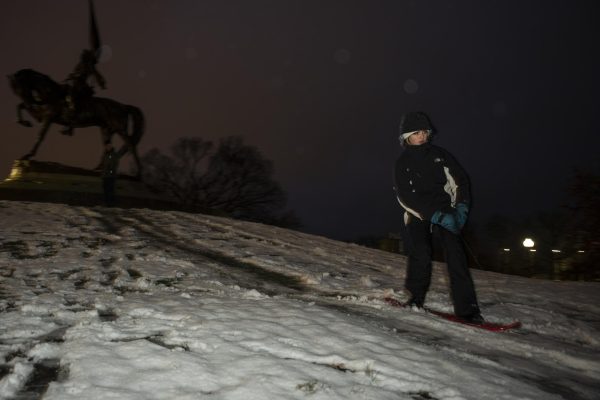James Webb Telescope is future of space exploration
September 5, 2011
The promotion of critical thinking and scientific understanding is something that is gravely lacking in our country. I also believe it is one of the primary reasons we are relinquishing our place in the world as a superpower. Apparently I’m not alone.
This summer I got to cover “The Amazing Meeting,” the country’s largest annual conference focused on science and skepticism.
Currently in its ninth year, “TAM” is hosted by the James Randi Educational Foundation, a group founded in 1996 by James “The Amazing” Randi, a magician who has spent much of his life working to debunk and discredit all things paranormal and pseudoscientific.
This year’s conference, “TAM 9 from Outer Space,” was held in Las Vegas on July 14–17. It focused mainly on human exploration and advancements in science.
Many of the presenters were some of the world’s top scientists and critical thinkers, but one of the most powerful talks came from astronomer and Southern Illinois University professor Pamela Gay.
Gay’s address was meant to motivate the crowd at “TAM” to take a more active role in advocating future science research and exploration or, more specifically, to make sure funding goes through for the James Webb Space Telescope.
“Science is something that inspires; it creates technologies; it makes lives better,” Gay said in an interview.
However, the bad economy is shifting our priorities: “It is very hard today to fight to advance science. This is why you’ve heard me fighting not to cut it,” she said.
The JWST is, in some ways, the successor to the Hubble Space Telescope, which has been in orbit since 1990, but it is a much more impressive and important observation tool for outer space research.
Unlike the Hubble, the JWST sees infrared wavelengths. This will allow it to see the most distant objects of the universe, including stars approximately 280 million years older than what can be seen now with Hubble.
There are numerous reasons this new technology is so important. The JWST could teach us about the beginnings of our universe and help us predict the future of our planet. It is also designed to make constant service missions—five were necessary for Hubble—a thing of the past.
NASA has already spent $3.5 billion on the JWST and recently said it expects the ultimate price tag of the project to reach $8.7 billion. This bill is supposed to be paid by the agency’s science division, which has a 2011 budget of $5 billion. While the division has taken care of all costs up until now, it has asked NASA to pitch in with money from other departments to split the remaining expenses.
This new proposal is currently waiting at the White House’s Office of Management and Budget. If it denies this plan, it is likely the JWST will never receive the funding it needs to get off the ground and into orbit.
It is true that there are already plans for more advanced telescopes, and on May 14, 2009, the European Space Agency launched the Herschel Space Observatory, which can see even longer wavelengths than the JWST. But these are not excuses to let the JWST fall off the radar.
In fact, they add to the importance of keeping plans for the JWST on track. As a country, one of our biggest faults is letting ourselves fall behind in scientific discovery. Some might say this is because so much has already been discovered. But if you consider how long humans have been on this planet and how much of our understanding has come in the last century, you begin to grasp how much is left for us to know. The JWST is the next step.
The OMB must accept the recent budget proposal for the JWST, and our nation must stand behind all future funding for this project.
“We are about to get a fairly rude awakening as a nation,” Gay said. “This year, China became No. 1 in the world for science and math education. India is catching up quickly. As they begin to surpass us, as they begin to call in the debt, the only way our country is going to drag itself back into a position of prominence is through science and technology.”
If we begin to deny the importance of research science, like observing the farthest corners of our universe, we may be closer to an apocalyptic ending than my fellow skeptics would like to believe.
Space is an expansive beast, and we’ve just begun to understand our own surroundings. The JWST is the future of space research, and the advancement of space research is the future of our species and possibly our only hope.







